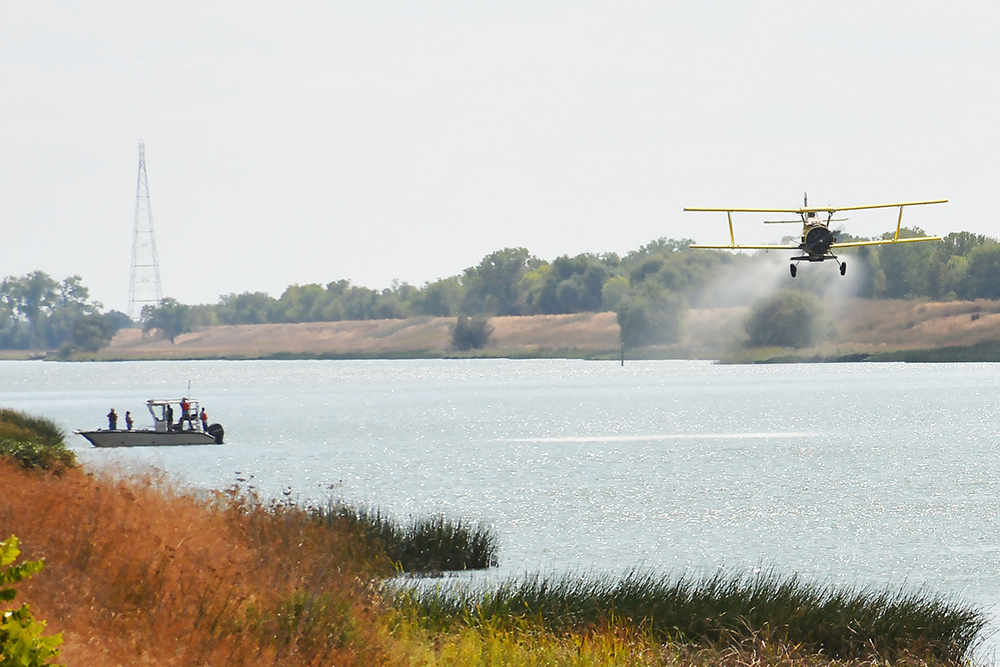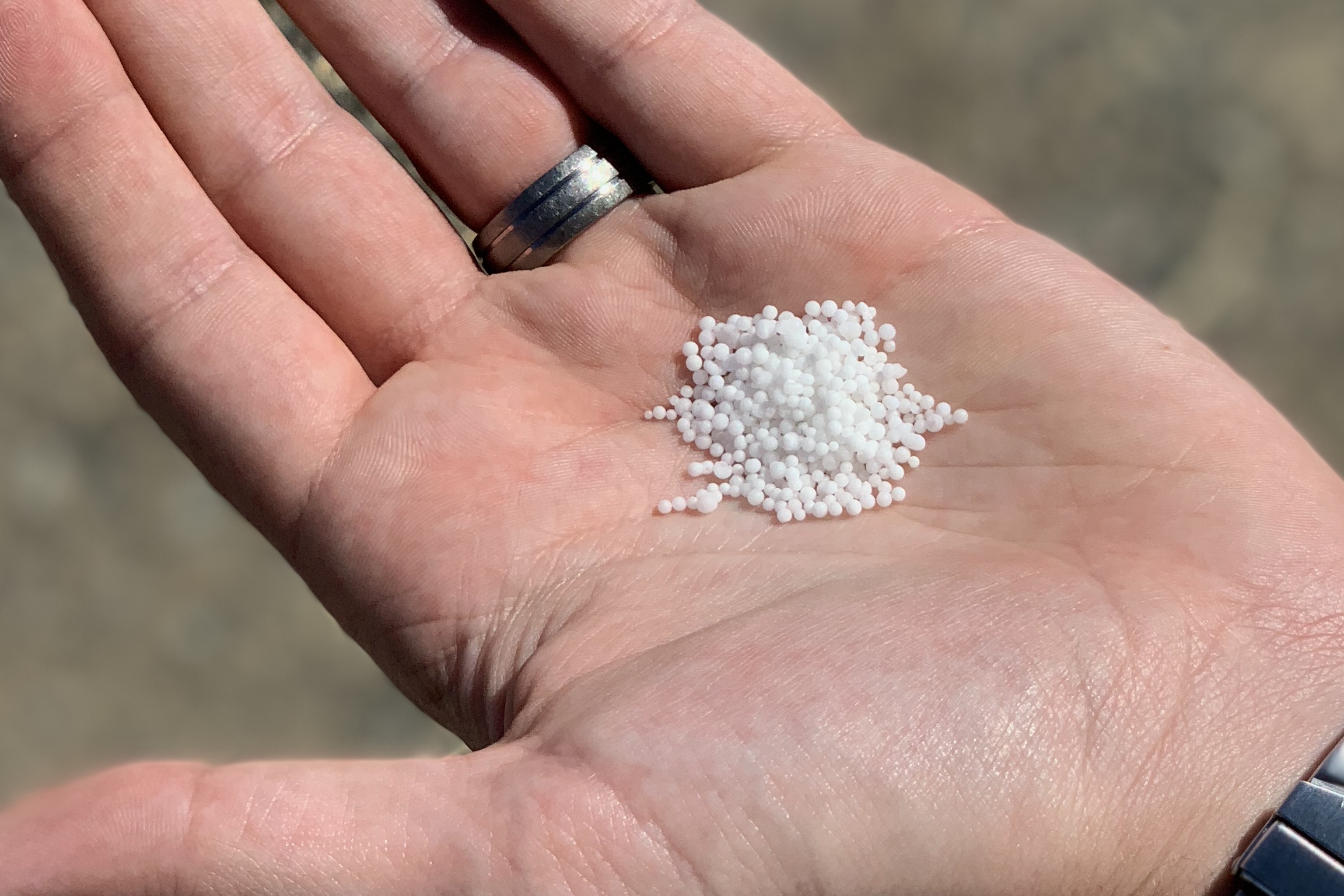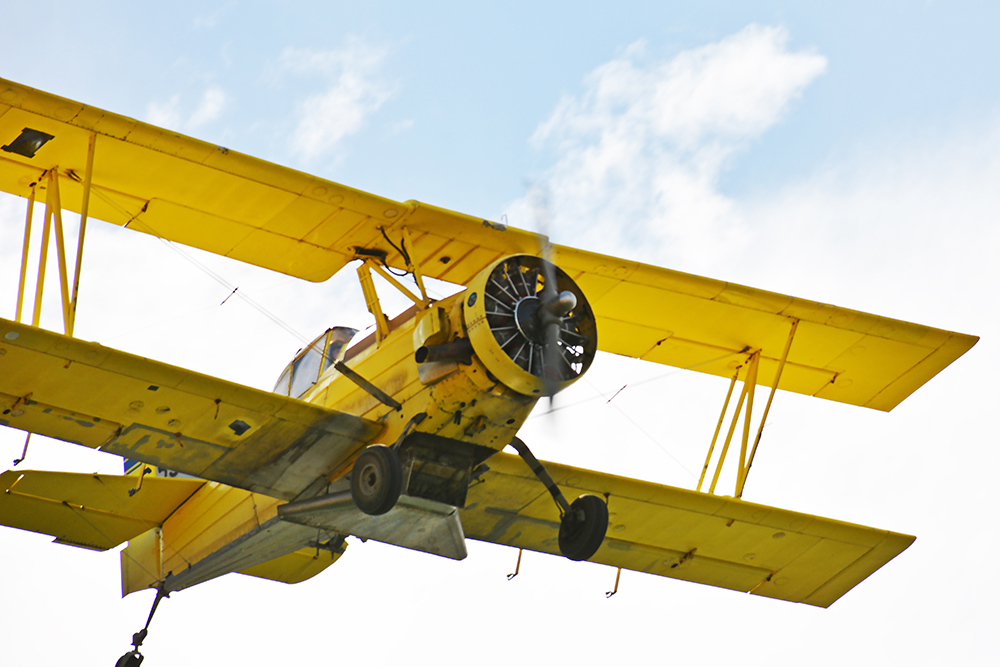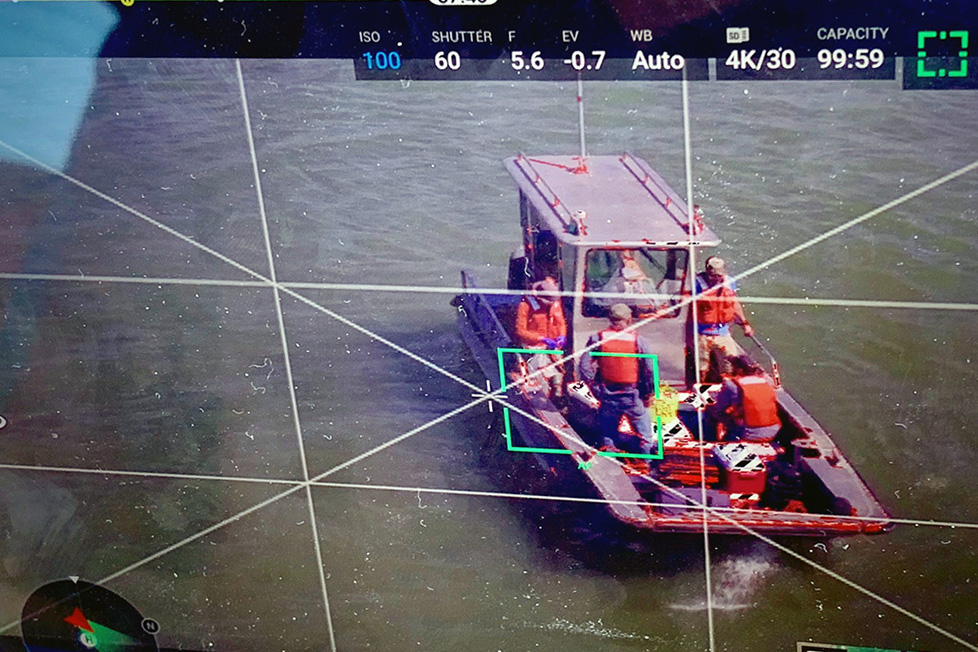- Reclamation
- News & Multimedia
- News Stories
- Fish food falling from the sky
Fish food falling from the sky
Written by: Todd Plain

Crop duster applies fertilizer into Sacramento Deep Water Ship Channel Oct. 1, 2018 (Reclamation photo by Patrick Moore / Released)Scientists are continually searching for creative ways to help Delta smelt, an endangered fish endemic to the Sacramento–San Joaquin Delta. These fish face many threats, including competition from introduced species, contaminants and especially a lack of food.
That’s why Dr. Erwin Van Nieuwenhuyse, an aquatic scientist with the Bureau of Reclamation’s Bay-Delta Office, teamed up with the University of California-Davis and the U.S. Geological Survey to conduct an experiment involving a boat, a plane and 2,000 pounds of calcium nitrate fertilizer.
The experiment was the brain child of Professor Randy Dahlgren and is being conducted by Professor Steve Sadro and Dr. Luke Loken from U.C. Davis with the assistance of Reclamation and USGS technical staff. It’s the first step in a broader effort to determine if the ship channel can be used to boost the Delta’s food supply without adversely affecting water quality.
Basically, the idea is to add fertilizer to a nitrogen-deficient area of the Delta to see if it increases production of microscopic plants (phytoplankton) that are the main food source for the tiny crustaceans (zooplankton) that Delta smelt depend on for their food.
“We’re trying to determine if the ship channel can be used to help alleviate a long-standing food shortage problem in the north Delta that is hampering efforts to recover Delta smelt and other listed fish species that impact Central Valley Project operations,” Van Nieuwenhuyse said. “We figure if we can make life a little easier for the fish, then it will make operating the CVP a little easier for us.”

Calcium nitrate fertilizer

Crop duster upshot

Drone image of USGS testing ship channel water/p>

Crop duster applies fertilizer Oct. 1, 2018
Published on October 22, 2018

